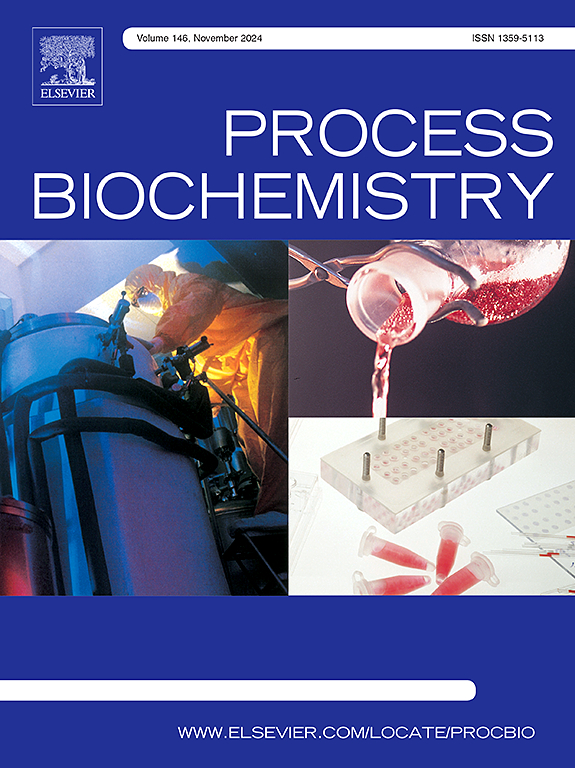Novel myco-fabrication of copper and nickel nanoparticles and evaluation of their effects against antibiotic resistance genes in different bacterial strains and anticancer potentials
IF 3.7
3区 生物学
Q2 BIOCHEMISTRY & MOLECULAR BIOLOGY
引用次数: 0
Abstract
Several endophytic fungal species were isolated and tested for their biosynthetic capabilities of Cu-NPs and Ni-NPs, as a potentially green and simple method with low cost. A promising fungus Aspergillus terreus was found to synthesize the two types of NPs. The synthesis of Cu-NPs and Ni-NPs was confirmed by several techniques. The antibacterial activity of the synthesized NPs alone and in combinations with different antibiotics (Benzathine penicillin and Ceftriaxone) against some antibiotic-resistant bacterial strains was assessed. The results showed that the antibiotic resistance genes of the tested bacterial strains were expressed when treated with either antibiotics, Cu-NPs, or Ni-NPs alone. Otherwise, it were down-regulated when treated with a combination of NPs and antibiotics, indicating the synergistic and additive effects of such combinations. Moreover, the cytotoxic activities of Cu-NPs and Ni-NPs were evaluated, and the results confirmed their moderate safety margin against several cancer and normal cell lines. Finally, the synthesis efficiency of both NPs was optimized using the response surface methodology. Under optimal conditions, the synthesis efficiency was significantly enhanced reaching 85.08 (Cu-NPs) and 80.71 % (Ni-NPs). These findings indicate that the fungal strain is a promising biofactory for Cu-NPs and Ni-NPs with promising activities to combat antibiotic-resistant bacteria and cancer.
新型真菌制备铜和镍纳米颗粒及其对不同菌株抗生素耐药基因的影响和抗癌潜力的评价
分离了几种内生真菌,并对其生物合成Cu-NPs和Ni-NPs的能力进行了测试,这是一种潜在的绿色、简单、低成本的方法。一种很有前途的真菌土曲霉可以合成这两种NPs。Cu-NPs和Ni-NPs的合成得到了多种技术的证实。比较了合成的NPs单独和与不同抗生素(苄星、青霉素和头孢曲松)联用对某些耐药菌株的抑菌活性。结果表明,在抗生素、Cu-NPs和Ni-NPs单独处理下,所测菌株的抗生素耐药基因均有表达。另外,NPs和抗生素联合治疗时,其表达下调,表明这两种组合具有协同作用和加性作用。此外,对Cu-NPs和Ni-NPs的细胞毒活性进行了评价,结果证实它们对几种癌症和正常细胞系具有中等的安全边际。最后,利用响应面法对两种NPs的合成效率进行了优化。在最优条件下,Cu-NPs的合成效率达到85.08 %,Ni-NPs的合成效率达到80.71 %。这些发现表明,该真菌菌株是Cu-NPs和Ni-NPs的有希望的生物工厂,具有对抗耐药细菌和癌症的有希望的活性。
本文章由计算机程序翻译,如有差异,请以英文原文为准。
求助全文
约1分钟内获得全文
求助全文
来源期刊

Process Biochemistry
生物-工程:化工
CiteScore
8.30
自引率
4.50%
发文量
374
审稿时长
53 days
期刊介绍:
Process Biochemistry is an application-orientated research journal devoted to reporting advances with originality and novelty, in the science and technology of the processes involving bioactive molecules and living organisms. These processes concern the production of useful metabolites or materials, or the removal of toxic compounds using tools and methods of current biology and engineering. Its main areas of interest include novel bioprocesses and enabling technologies (such as nanobiotechnology, tissue engineering, directed evolution, metabolic engineering, systems biology, and synthetic biology) applicable in food (nutraceutical), healthcare (medical, pharmaceutical, cosmetic), energy (biofuels), environmental, and biorefinery industries and their underlying biological and engineering principles.
 求助内容:
求助内容: 应助结果提醒方式:
应助结果提醒方式:


